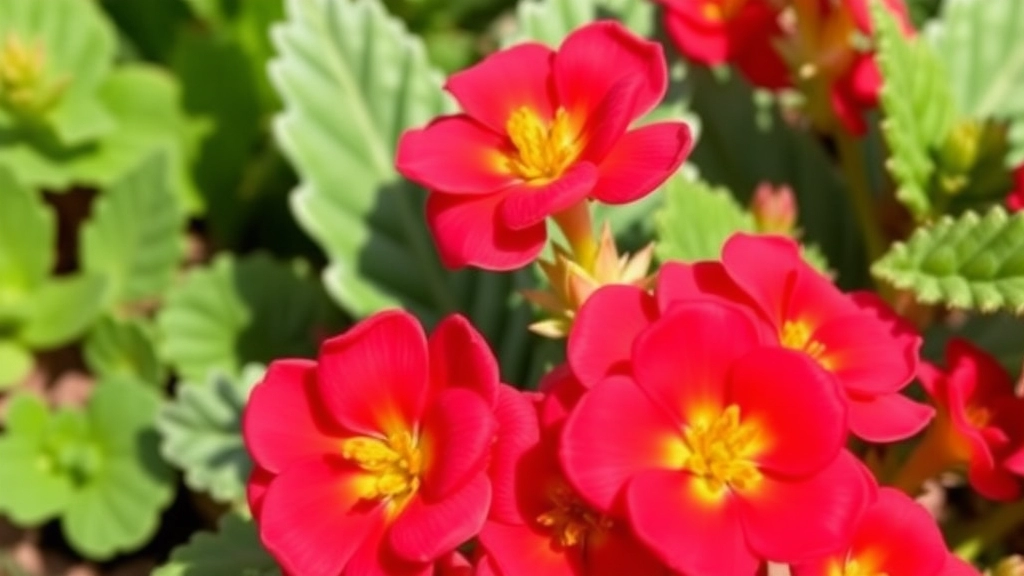Can Kalanchoe Take Full Sun?
Wondering if Kalanchoe can take full sun? You’re not alone. Many plant enthusiasts ask this question to ensure their succulents thrive. Kalanchoe, known for its vibrant blooms and easy care, loves bright light but has a mixed relationship with direct sunlight. Let’s dive into the best lighting conditions for your Kalanchoe and whether it can handle full sun exposure.
Optimal Lighting Conditions
Generally, Kalanchoe thrives in bright, indirect light. However, it can tolerate full sun in certain climates, especially if gradually acclimated. Too much direct sunlight, particularly in hot climates, can cause sunburn or stress. So, it’s crucial to monitor your plant and adjust its exposure accordingly.
Tips for Balancing Sunlight and Shade
Keep reading to discover how to balance sunlight and shade for a happy, healthy Kalanchoe.
Best Lighting Conditions for Kalanchoe
When it comes to cultivating a thriving Kalanchoe, understanding its lighting needs is crucial. Many plant enthusiasts often wonder: What are the best lighting conditions for Kalanchoe?
Kalanchoe is a succulent that flourishes in bright, indirect sunlight. Here’s a quick breakdown of optimal lighting conditions:
- Bright Indirect Light: Aim for a spot where the plant receives plenty of bright, filtered sunlight. This helps maintain its vibrant foliage and encourages blooming.
- Avoid Direct Sunlight: While Kalanchoe can tolerate some direct sunlight, prolonged exposure can lead to sunburn.
- Natural Light Sources: Placing your Kalanchoe near a south or west-facing window is ideal. This allows the plant to soak up the necessary light without being scorched.
- Supplemental Lighting: If natural light is limited, consider using grow lights to provide the necessary intensity.
It’s essential to monitor your plant’s response to its environment. If you notice it stretching towards the light, it may need a brighter location. For more detailed care tips, you can check out our expert tips on Kalanchoe Flapjack care or learn about the best care practices for Kalanchoe in different climates.
Can Kalanchoe Handle Full Sun Exposure?
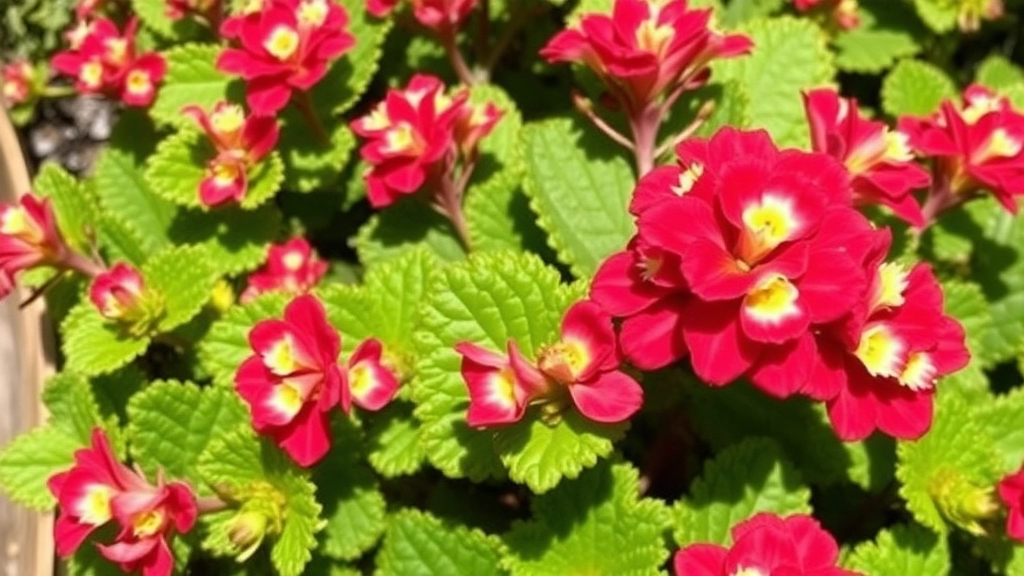
So, you’re wondering if your Kalanchoe can bask in the full sun, right?
Well, the good news is that many Kalanchoe varieties can indeed handle full sun exposure.
Here’s the lowdown:
- Sun-loving Nature: Kalanchoe is a succulent, and like many succulents, it thrives in bright light.
- Variety Matters: Some types, like Kalanchoe blossfeldiana, are particularly well-suited for sunny spots.
- Adaptability: These plants can adapt to different light conditions, but they truly shine in bright, direct sunlight.
However, it’s not all sunshine and rainbows.
A Few Things to Keep in Mind:
- Gradual Exposure: If your Kalanchoe has been indoors or in partial shade, don’t just plop it in the blazing sun. Gradually increase its sunlight exposure over a week or two.
- Watering Needs: Full sun means your Kalanchoe may need more frequent watering. Keep an eye on the soil moisture.
- Temperature Checks: Ensure that your Kalanchoe is in a spot that doesn’t get too hot. Extreme heat can stress the plant.
Effects of Too Much Sunlight on Kalanchoe
When it comes to caring for Kalanchoe, understanding the effects of excessive sunlight is crucial. Many plant enthusiasts often wonder, âCan my Kalanchoe get too much sun?â The answer is a resounding yes.
Signs of Overexposure
Too much sunlight can lead to several detrimental effects on your Kalanchoe, including:
- Leaf Burn: The most immediate sign of too much sun is leaf burn, where the edges of the leaves turn brown and crispy.
- Wilting: Ironically, while Kalanchoe thrives in bright light, excessive sun can lead to wilting due to dehydration.
- Faded Colours: Healthy Kalanchoe boasts vibrant colours. If you notice the colours fading, it may be a sign of sun stress.
- Stunted Growth: Extended exposure can inhibit growth, as the plant diverts energy to cope with stress rather than thrive.
Mitigation Strategies
If you suspect your Kalanchoe is suffering from too much sunlight, consider these strategies:
- Relocate: Move your plant to a location with filtered sunlight, such as near a sheer curtain or under a tree.
- Monitor Watering: Adjust your watering schedule to ensure the plant remains hydrated without becoming waterlogged.
- Prune Damaged Leaves: Regularly check for and remove any damaged leaves to encourage new growth. For more detailed information on pruning, refer to our pruning guide.
For more insights on why your Kalanchoe may be experiencing issues, such as leaves turning brown, explore our comprehensive guides.
Transitioning Kalanchoe to Full Sun Outdoors
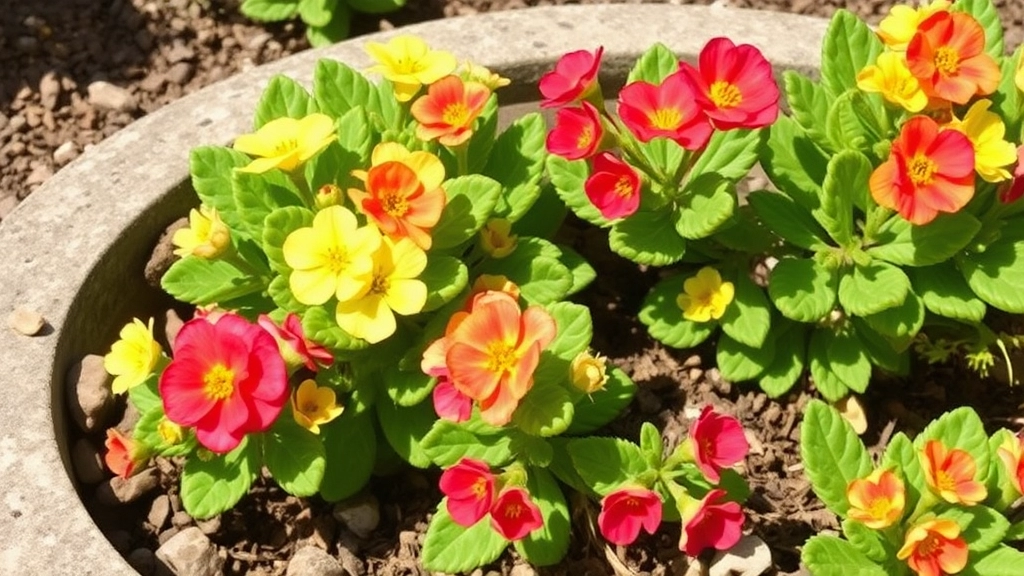
Transitioning your Kalanchoe to full sun outdoors can be a rewarding experience, but it does come with its own set of challenges. Many plant enthusiasts worry about whether their Kalanchoe can adapt to the more intense sunlight outside.
Steps for a Successful Transition:
- Start Gradually:
- Begin by placing your Kalanchoe in a shaded area for a few days.
- Gradually increase its exposure to sunlight over a week or two.
- Choose the Right Time:
- Early morning or late afternoon sun is ideal for initial exposure.
- Avoid the harsh midday sun during the first few days.
- Monitor Soil Moisture:
- Ensure the soil remains slightly moist but not soggy.
- Water your Kalanchoe well before moving it outside.
- Observe Temperature Changes:
- If temperatures fluctuate significantly, consider waiting for more stable weather.
- Aim for temperatures above 15°C (59°F) for optimal growth.
- Watch for Signs of Stress:
- Keep an eye out for any wilting or discoloration.
- If you notice any issues, move the plant back to a shadier spot.
By taking these steps, you can help your Kalanchoe thrive in its new environment.
When it comes to nurturing Kalanchoe indoors, one of the most frequent concerns is finding the right balance of sunlight.
### What’s the Best Light for Indoor Kalanchoe?
Kalanchoe thrives in bright, indirect sunlight.
– **Location Matters**: A south or west-facing window is often ideal, allowing your plant to soak up ample light without being scorched.
– **Duration**: Aim for 6 to 8 hours of light daily. This will help your Kalanchoe flourish and produce those stunning blooms.
– **Avoid Direct Rays**: While Kalanchoe enjoys light, direct sunlight can be too harsh. Filtered light through sheer curtains can work wonders.
### Signs Your Kalanchoe is Happy
– **Vibrant Leaves**: Healthy, green leaves indicate your plant is receiving the right amount of light.
– **Frequent Blooms**: A well-lit Kalanchoe will reward you with its beautiful flowers.
### Adjusting Light Conditions
If you notice your Kalanchoe leaning towards the light, it’s a sign it’s not getting enough. Rotate your plant every few weeks to ensure even growth.
In contrast, if the leaves start to yellow or drop, it may be receiving too much direct sun, and you should consider relocating it to a shadier spot. For more tips on keeping your plant healthy, check out our [guide on why Kalanchoe bottom leaves turn yellow](https://planthq.org/why-kalanchoe-bottom-leaves-turn-yellow-causes-solutions/) and our [complete care guide for Kalanchoe Beharensis](https://planthq.org/complete-care-guide-for-kalanchoe-beharensis-felt-plant/).
Protecting Kalanchoe from Harsh Afternoon Sun
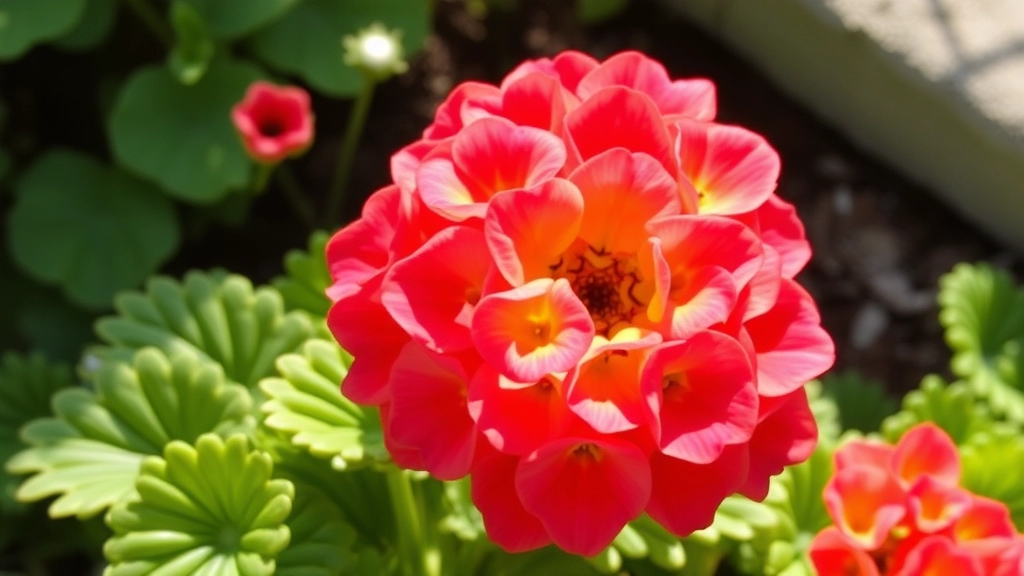
So, you’ve got your Kalanchoe basking in the sun, but those harsh afternoon rays can be a real game-changer.
Why the Afternoon Sun Can Be a Problem:
- Intensity: The sun can be blazing, especially in the summer.
- Heat: It can cause your plant to dry out faster than you’d like.
- Burn: Leaves can get scorched and crispy.
Here’s how to keep your Kalanchoe safe:
- Find a Spot: If possible, place your Kalanchoe where it gets morning sun but is shaded in the afternoon. A spot with dappled light works wonders.
- Use Shade Cloth: If you’re growing outdoors, consider using a shade cloth. It can filter out some of that harsh light without blocking all of it.
- Move Indoors: On particularly hot days, bring your Kalanchoe indoors for a break. It’ll appreciate the cooler temps.
- Water Wisely: Make sure you’re watering adequately, especially before a hot spell. A well-hydrated plant is better equipped to handle the heat.
- Monitor Soil Moisture: Keep an eye on the soil. If it’s drying out too quickly, it might be time to adjust your watering routine.
Signs of Sun Stress in Kalanchoe
As we explore the effects of sunlight on Kalanchoe, it’s crucial to recognise when these plants are experiencing sun stress. This understanding can help us take immediate action to protect them.
Key Indicators of Sun Stress:
- Leaf Discolouration:
- Leaves may turn yellow or brown, indicating they are receiving too much sunlight.
- Look for patches of scorched leaves, usually starting at the tips.
- Wilting or Drooping:
- If your Kalanchoe appears limp, it might be struggling with excessive heat from direct sunlight.
- Wilting can also be a sign of dehydration, often exacerbated by high light exposure.
- Leaf Drop:
- An unusual amount of leaf drop can signal stress.
- If this happens, it’s a sign that your plant is struggling to cope with its environment.
- Stunted Growth:
- If your Kalanchoe isn’t growing as expected, it may be due to sun stress.
- Excessive sunlight can hinder its overall development.
- Burnt Edges:
- Look for crispy, brown edges on the leaves.
- This is a clear sign that the plant is getting too much direct sunlight.
Recognising these signs is vital for maintaining the health of your Kalanchoe. For more detailed advice on how to care for your plant, check out our optimal watering tips for healthy Florist Kalanchoe and our essential Kalanchoe care tips for summer success.
How to Adjust Lighting to Encourage Flowering
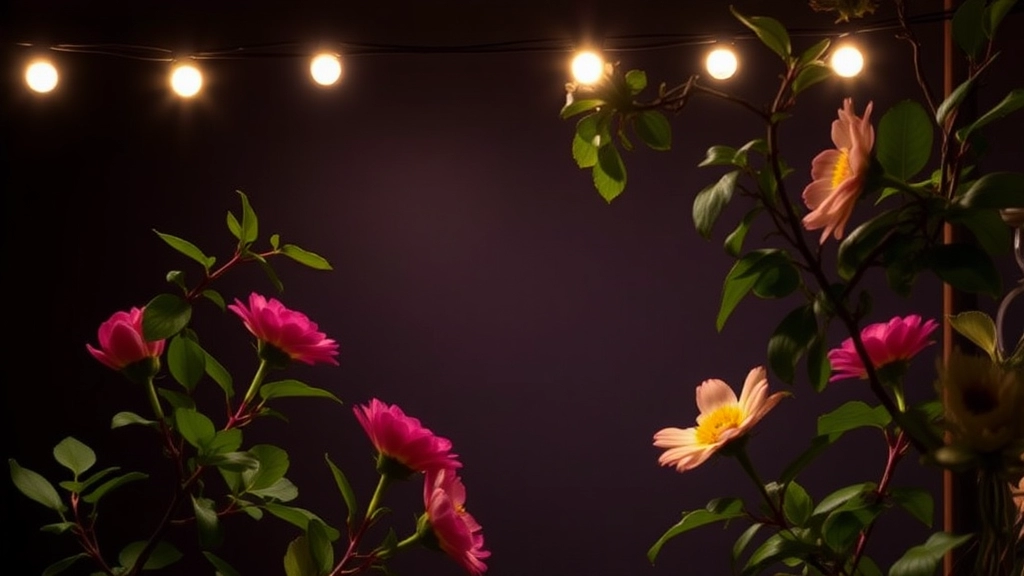
So, you want your Kalanchoe to bloom like a champ, right?
Lighting plays a crucial role in getting those vibrant flowers to pop.
Here’s how to adjust the lighting for your Kalanchoe to encourage flowering:
- Bright, Indirect Light: Aim for a spot that gets plenty of bright, indirect sunlight. Too much direct sun can scorch the leaves, while too little light can stunt flowering.
- 12-Hour Light Cycle: Kalanchoe loves consistency. Keep it in bright light for about 12 hours a day. This mimics their natural growing conditions and encourages those stunning blooms.
- Rotate Your Plant: Every couple of weeks, give your Kalanchoe a gentle spin. This helps it grow evenly and ensures all sides get enough light.
- Use Grow Lights: If natural light is scarce, consider using grow lights. They can provide the right spectrum of light that Kalanchoe needs to thrive.
- Watch the Seasons: During the winter months, when daylight is shorter, you might need to supplement with artificial lighting to keep your plant happy and blooming.
- Limit Nighttime Light: Kalanchoe prefers a dark period to trigger flowering. Avoid leaving lights on overnight, as this can confuse the plant and delay blooms.
Kalanchoe Varieties That Thrive in Full Sun
When considering which Kalanchoe varieties can truly flourish in full sun, it’s essential to recognise that not all species are created equal.
Kalanchoe Blossfeldiana
This popular variety is known for its vibrant flowers and robust nature.
- Sun Tolerance: Thrives in full sun, provided it has well-draining soil.
- Flowering: Produces clusters of bright blooms, especially when exposed to ample sunlight.
Kalanchoe Tomentosa (Panda Plant)
With its fuzzy leaves and unique appearance, the Panda Plant is a favourite among succulent enthusiasts.
- Sun Tolerance: Enjoys full sun but can benefit from some afternoon shade in hotter climates.
- Care Tip: Water sparingly to prevent root rot.
Kalanchoe Fedtschenkoi (Chandelier Plant)
This variety features stunning, elongated leaves that can add a dramatic touch to your garden.
- Sun Tolerance: Prefers full sun, making it ideal for outdoor settings.
- Growth Habit: Can grow quite tall, so ensure it has space to thrive.
Kalanchoe Luciae (Paddle Plant)
Known for its striking, paddle-shaped leaves, this variety is a showstopper.
- Sun Tolerance: Full sun exposure enhances its colour and overall health.
- Watering: Allow the soil to dry out between waterings for optimal growth.
Additional Considerations
When selecting Kalanchoe varieties for full sun, keep the following in mind:
- Soil Quality: Ensure well-draining soil to prevent waterlogging.
- Climate: Some varieties may need protection in extreme heat.
- Space: Allow room for growth, as some species can become quite large.
For more detailed care tips for your Kalanchoe Blossfeldiana and Chandelier Plant, be sure to check out our comprehensive guides.
Growing Kalanchoe in Different Climate Zones
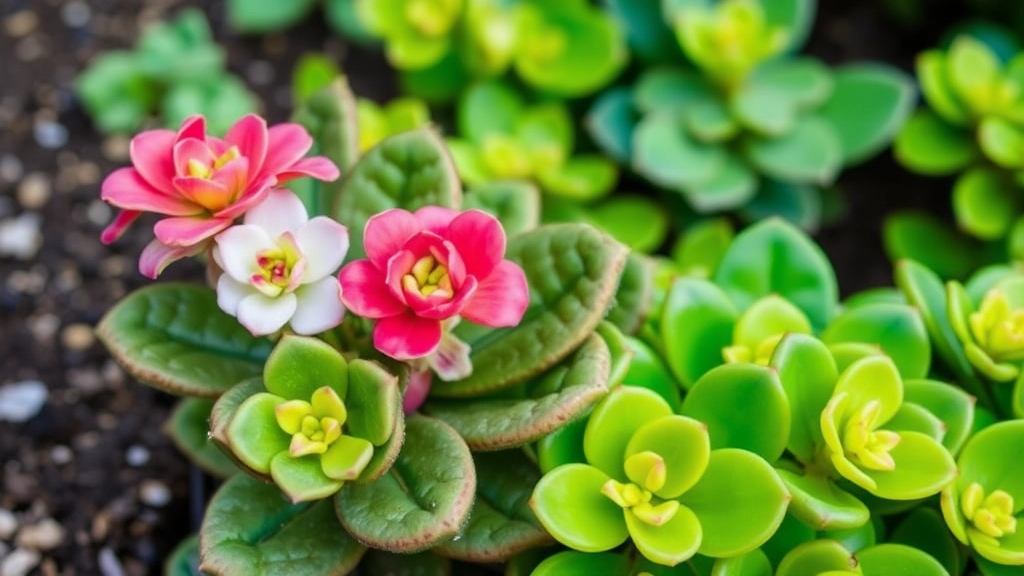
So, you’re keen on growing Kalanchoe but unsure how it’ll fare in your local climate?
Don’t worry, I’ve got you covered.
Kalanchoe is a resilient plant that can adapt to various environments, but understanding your climate zone is crucial for its success.
Understanding Climate Zones
Before diving in, it’s helpful to know your climate zone. Here’s a quick breakdown:
- Tropical and Subtropical Zones:
- Perfect for Kalanchoe!
- They thrive with plenty of sunlight and warmth.
- Temperate Zones:
- You can grow Kalanchoe outdoors in summer.
- Just be cautious during the colder months; bring them indoors or provide protection.
- Cold Zones:
- These zones can be tricky.
- Consider growing Kalanchoe in pots so you can move them inside when temperatures drop.
Tips for Different Climates
- Tropical:
- Plant them in well-draining soil.
- Water sparingly; they prefer drier conditions.
- Temperate:
- Ensure they get at least 6 hours of sunlight.
- Use pots for easy relocation when the weather changes.
- Cold:
- Opt for indoor growth.
- Use grow lights if natural sunlight is limited.
Real-Life Example
I once had a friend in the UK who adored Kalanchoe but struggled during winter.
After switching to pots and using a sunny windowsill, her plants flourished!
Additional Care Tips for Sun-Exposed Kalanchoe
After ensuring your Kalanchoe is getting the right amount of sunlight, it’s essential to provide additional care to keep it thriving in sun-exposed conditions.
Frequently Asked Questions about Kalanchoe and Sun Exposure
Can Kalanchoe Handle Full Sun?
Yes, many Kalanchoe varieties can handle full sun exposure. They are succulents and thrive in bright light. However, it’s important to gradually acclimate them to full sun if they have been kept indoors or in partial shade.
What Types of Kalanchoe Are Best for Full Sun?
Varieties like Kalanchoe blossfeldiana are particularly well-suited for sunny spots. These types can adapt to different light conditions but truly shine in bright, direct sunlight.
How Should I Transition My Kalanchoe to Full Sun Outdoors?
Gradually increase its exposure to sunlight over a week or two. Start with early morning or late afternoon sun and avoid harsh midday sun initially. Ensure the soil remains slightly moist and monitor for any signs of stress.
How Can I Protect My Kalanchoe from Harsh Afternoon Sun?
Place your Kalanchoe where it gets morning sun but is shaded in the afternoon. Using a shade cloth or moving the plant indoors on particularly hot days can also help. Make sure to water adequately to keep the plant hydrated.
How Do I Adjust Lighting to Encourage Kalanchoe Flowering?
Aim for bright, indirect light and maintain a 12-hour light cycle. Rotate your plant periodically to ensure even light distribution. During shorter daylight months, supplement with grow lights and avoid nighttime light exposure to trigger flowering.
Can Kalanchoe Grow in Different Climate Zones?
Yes, Kalanchoe is adaptable to various environments. In tropical and subtropical zones, they thrive with plenty of sunlight and warmth. In temperate zones, they can grow outdoors in summer but should be brought indoors during colder months. In cold zones, it’s best to grow them in pots and use grow lights if natural sunlight is limited.
What Should I Consider When Growing Kalanchoe in Cold Zones?
Opt for indoor growth and use grow lights to supplement natural sunlight. Ensure the plant is in well-draining soil and water sparingly to prevent overwatering.
References
-
Kalanchoe Light Requirements – Gardening Know How
-
How to Grow and Care for Kalanchoe Indoors – The Spruce
-
Kalanchoe: How to Grow and Care for Kalanchoe Plants – The Old Farmer’s Almanac
